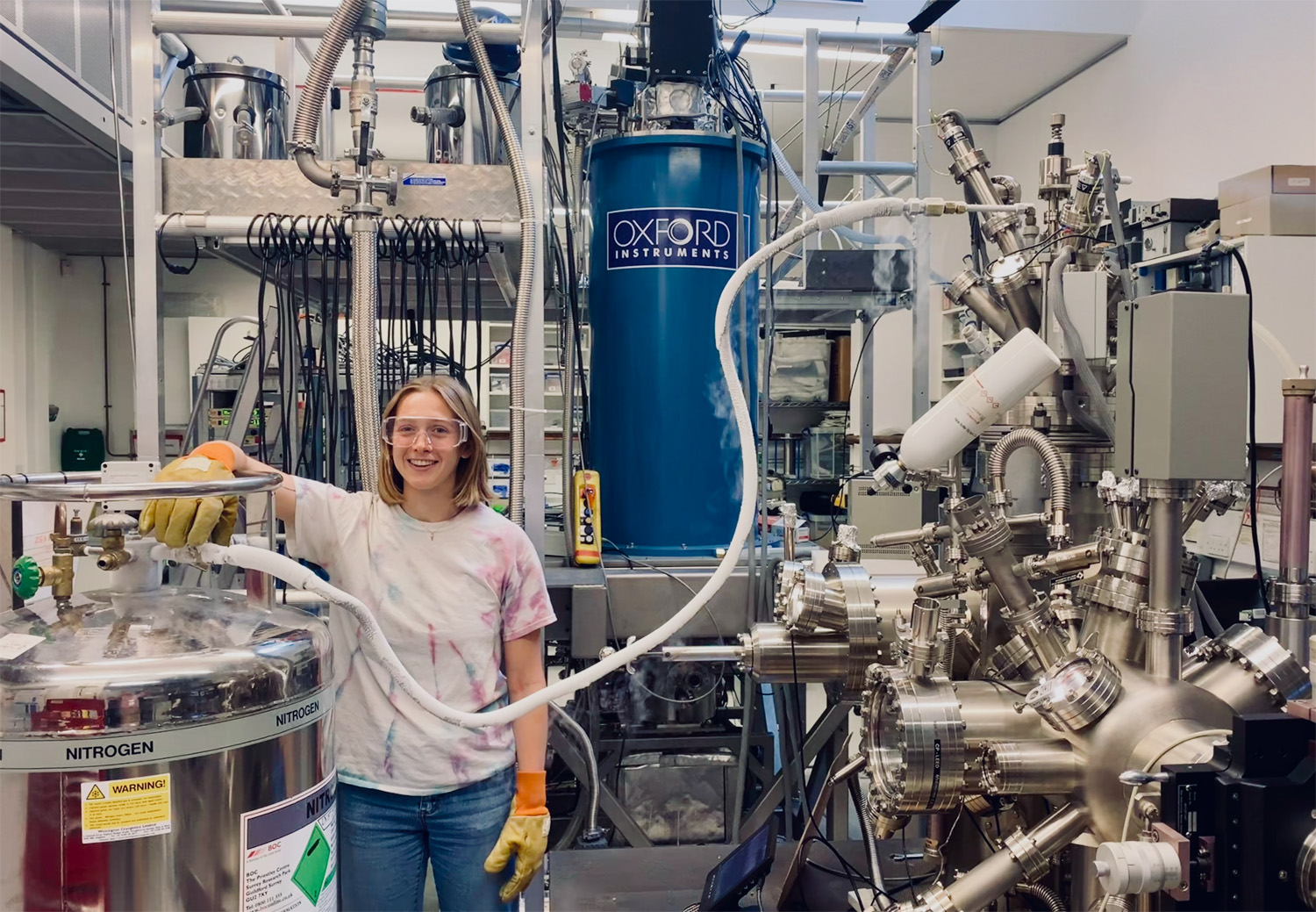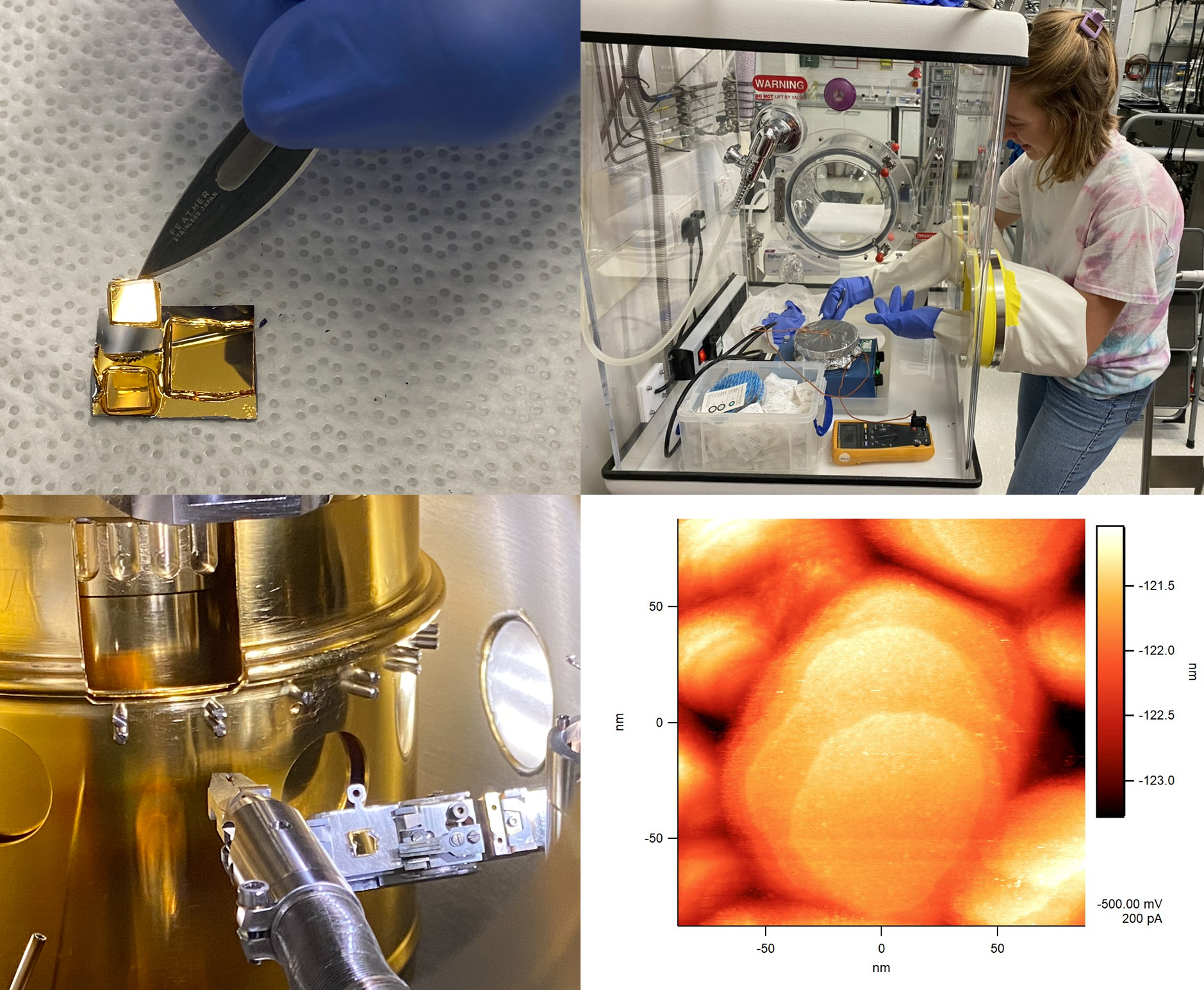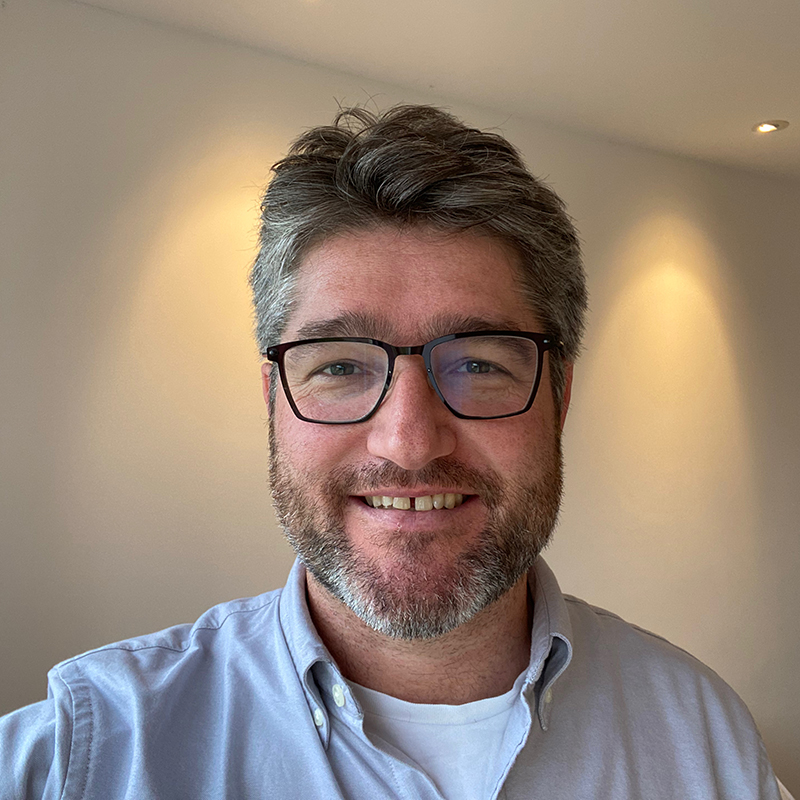Visiting Researcher Dr Rebecca Rodrigues de Miranda (ICMCB Bordeaux) Introduces the Lab to Spin-Crossover Self-Assembled Monolayers (SCO-SAMs)
This week marks the end of a successful visit to our group by Dr Rebecca Rodrigues de Miranda from the Institute of Condensed Matter Chemistry of Bordeaux (ICMCB).
Rebecca’s research focuses on spin-crossover (SCO) compounds—a fascinating class of molecular materials that can reversibly switch between low-spin and high-spin states in response to external stimuli such as temperature, pressure, or light. This switching is often accompanied by large changes in magnetic, optical, and electronic properties, making SCO molecules strong candidates for future molecular-scale sensors, memories, and logic devices.
Rebecca, a postdoctoral researcher working with Dr Mathieu Gonidec at ICMCB–CNRS, became interested in SCOs during her PhD under the supervision of Dr Patrick Rosa. Together with their team, they demonstrated that an iron(II) SCO compound functionalised with a long alkyl chain exhibits reversibly switchable behaviour when formed into a self-assembled monolayer (SAM) on gold substrates (ACS Nano 19, 36566–36577 (2025)). This result is particularly noteworthy because direct contact between SCO molecules and a metallic substrate often suppresses or “pins” their switchable behaviour, undermining their potential for device applications.

The goal of Rebecca’s visit to UCL was to use our ultrahigh-vacuum low-temperature scanning tunnelling microscope (UHV LT-STM) to image these SAMs with atomic resolution. Despite previously employing a range of analytical techniques to probe the structural, electronic, and magnetic properties of these layers, open questions remain regarding their atomic-scale structure. One key question concerns the adsorption geometry of the SCO molecules: whether the intended thiol headgroup always binds directly to the gold surface, or whether the molecule sometimes folds so that the SCO “head” group also interacts with the substrate. High-resolution STM imaging, complemented by tunnelling spectroscopy and comparison with density-functional-theory calculations, will help answer this question and shed light on the conformation of the adsorbates and how substrate interactions affect spin switching at the single-molecule level.
The first step in preparing the SAMs is to produce what are known as template-stripped gold substrates. This is done by evaporating a 200-nm layer of gold onto a silicon wafer and then attaching a small glass substrate to the gold film. The samples were brought from France in this form. Once at UCL, the gold surface was exposed by removing the silicon wafer to reveal an atomically flat, pristine gold surface. The samples were then mounted onto an STM sample plate using a UHV-compatible conductive epoxy, which was cured by annealing below 375 K before being transferred to the STM for imaging.

The next stage was to prepare the SAMs. Freshly exposed gold substrates were immersed in a solution of the SCO compound in methanol, with a small amount of triethylamine to activate the molecules for binding to the gold surface. The vials were purged with nitrogen and left sealed for 24 hours to allow the SAMs to form. After incubation, the substrates were rinsed with methanol, dried under nitrogen, and, after being mounted on STM sample plates, transferred into UHV where they were degassed overnight.
The STM data we obtained during this short visit were promising. We imaged extended atomically flat regions of clean gold on the pristine template-stripped samples and resolved the surface structure of the SAMs prepared under several different conditions. Imaging and tunnelling spectroscopy were performed both at room temperature and at 77 K.
The collaboration proved mutually beneficial, and we learned a great deal from Rebecca, even achieving several firsts for our laboratory during her visit. The template-stripped gold preparation method is something we have been aiming to establish in our lab to produce atomically flat gold surfaces suitable for transferring monolayer and few-layer flakes of two-dimensional materials. From Rebecca we learned several important details about the preparation of these samples, which will be carried forward into future experiments on exfoliated two-dimensional materials planned for 2026.
Moreover, Rebecca’s visit marks the first time that ex-situ fabricated SAMs—or ex-situ chemically prepared samples of any kind—have been successfully imaged in our laboratory. This represents an important step for us toward combining wet-chemical sample preparation with atomic-scale UHV characterisation.
Rebecca’s visit has opened up the potential for future collaborations between our group and researchers in Bordeaux, or with other groups working in related areas, combining expertise in molecular synthesis, thin-film preparation, and atomic-scale characterisation.
Rebecca gratefully acknowledges the support of Quantum Matter Bordeaux (QMBx) for funding her visit.
